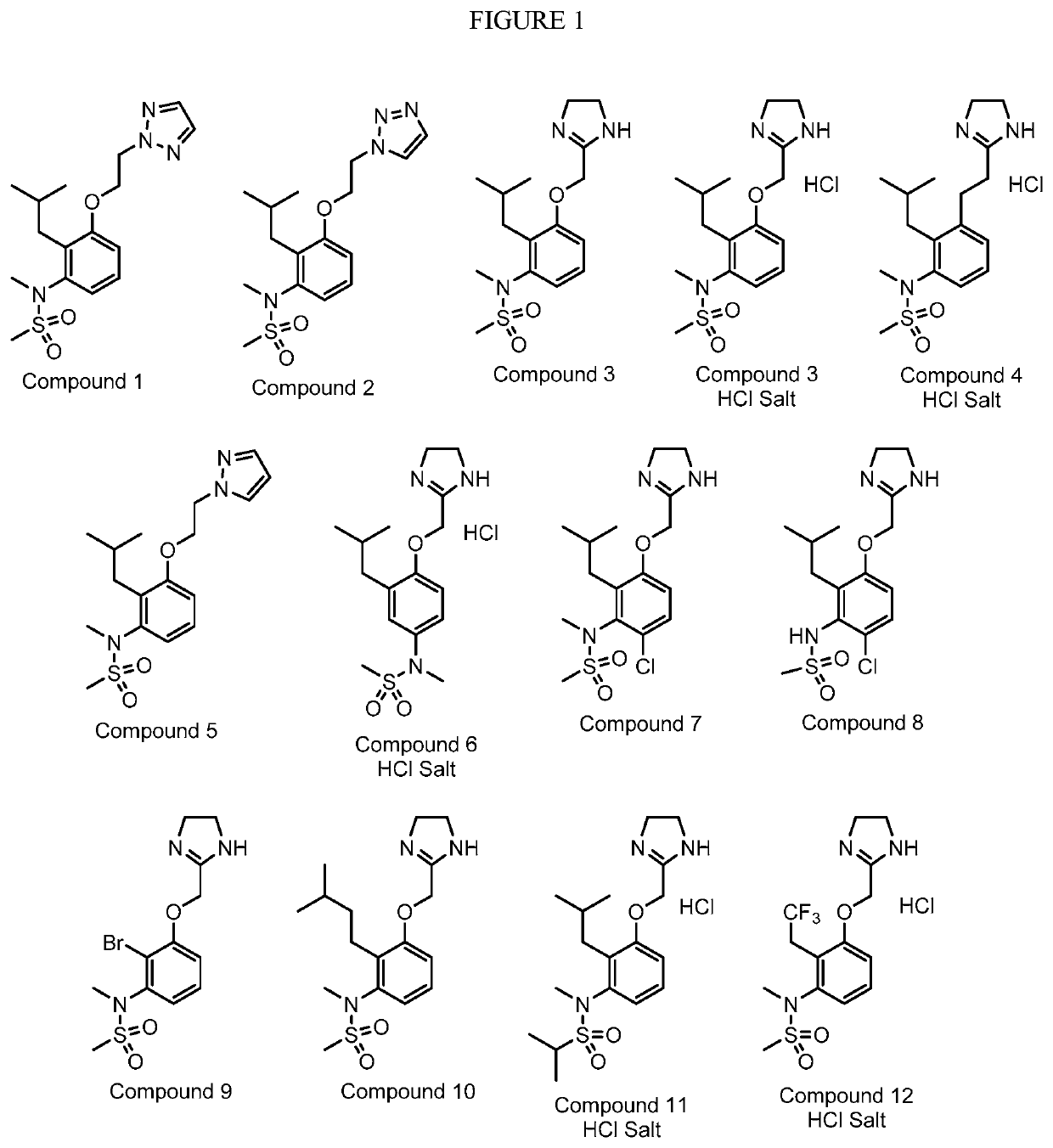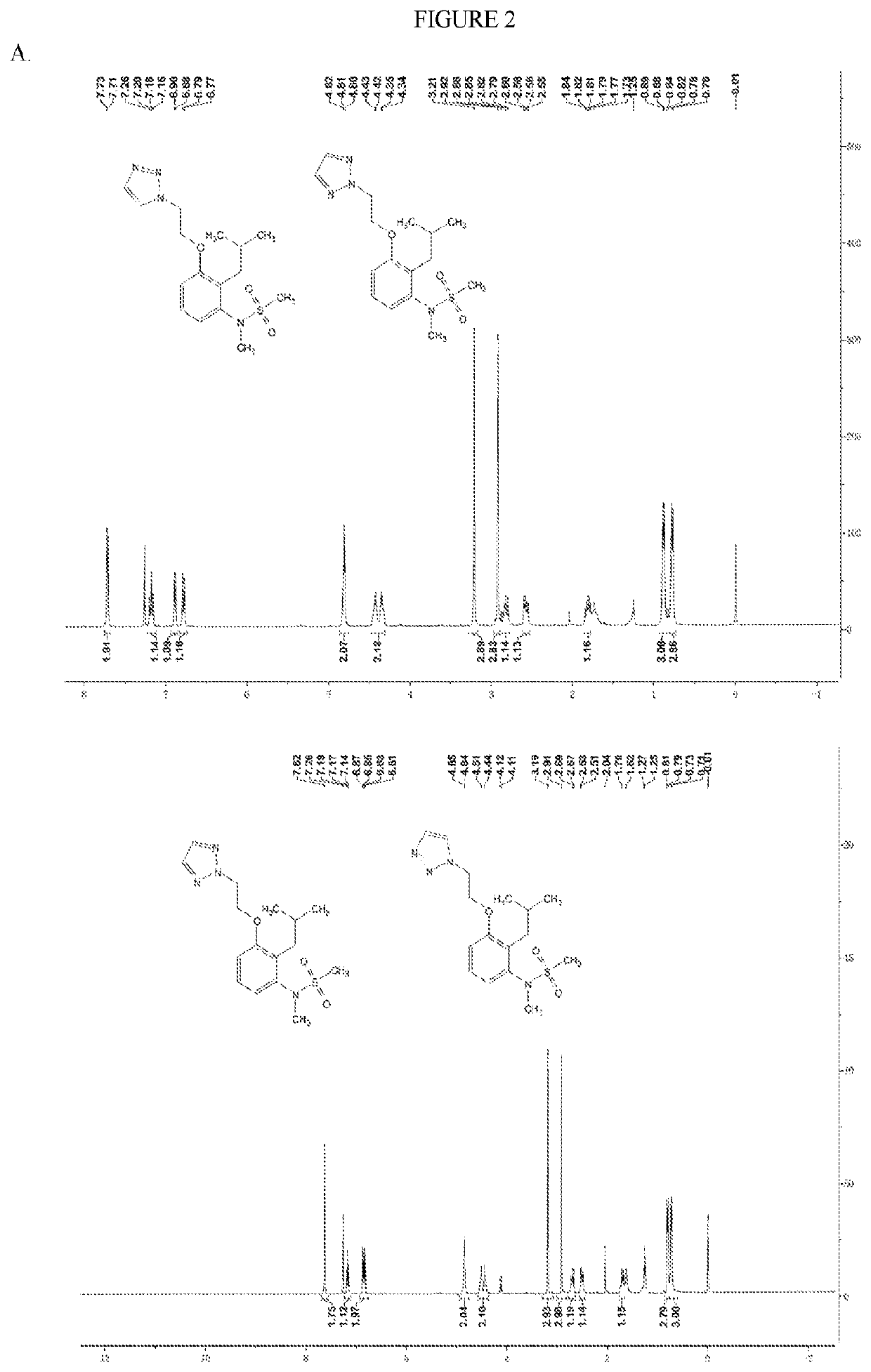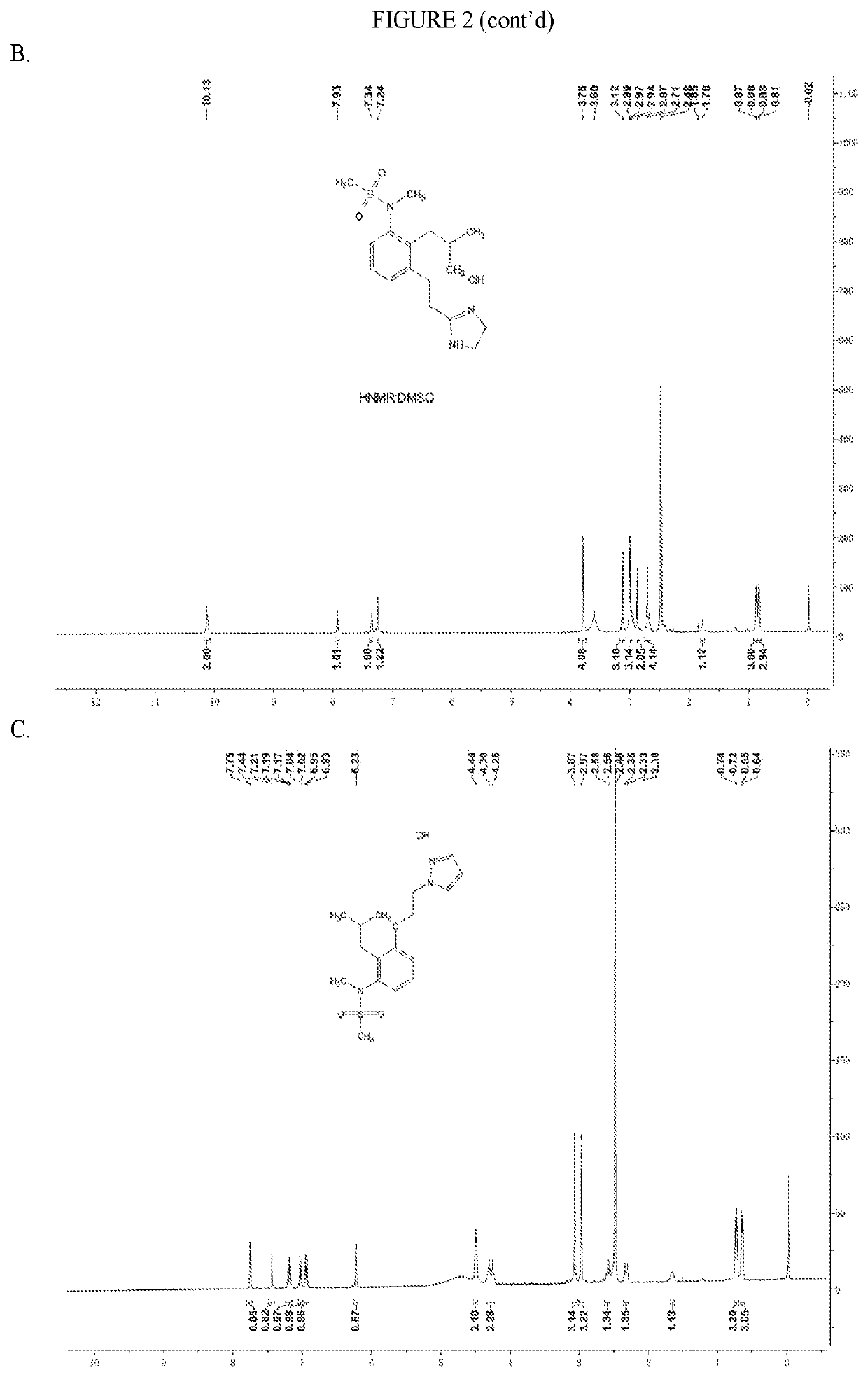Allosteric activators of the alpha1a-adrenergic receptor
an allosteric activator and receptor technology, applied in the field of allosteric activators of the alpha1aadrenergic receptor, can solve the problems of affecting the cognitive efficacy and disappointing clinical trials of amyloid immunotherapies, and achieve the effects of limiting the potential effects of pam, causing a greater number of side effects, and enhancing maximum activity
- Summary
- Abstract
- Description
- Claims
- Application Information
AI Technical Summary
Benefits of technology
Problems solved by technology
Method used
Image
Examples
example 1
Synthesis of Compound 3
[0225]General Procedures. Chemical shift values are reported in δ values (parts per million, ppm) relative to the standard chemical shift for the hydrogen residue peak in the deuterated solvent, CDCl3 or DMSO-d6. The coupling constant (J) values are expressed in hertz (Hz). Thin-layer chromatography (TLC) was performed on silica gel plates. Compounds on TLC were visualized by illumination under UV light (254 nm), or dipped into 10% phosphomolybdic acid in ethanol, followed by charring on a hot plate. Solvent systems are expressed as a percentage of the more polar component with respect to total volume (v / v %). Silica gel (300-400 mesh) was used for flash column chromatography. Evaporations were carried out under reduced pressure (vacuum pump) with the bath temperature below 50° C. unless specified otherwise. Materials obtained from commercial suppliers were used without further purification.
[0226]All operations with air sensitive compounds were carried out und...
example 2
Characterization Data for Compounds 1-2 and 4-10
[0240]Compounds 1-2 and 4-10 (structures shown in FIG. 1) were synthesized by methods similar to those illustrated herein for Compound 3. Characterization data is as follows.
[0241]Compound 1. MS: m / z=353.2 [M+H]+. 1H NMR spectrum shown in FIG. 2A.
[0242]Compound 2. MS: m / z=353.2 [M+H]+. 1H NMR spectrum shown in FIG. 2A. Note: Compounds 1 and 2 are regioisomers isolated from a single reaction mixture.
[0243]Compound 4. MS: m / z=338.2 [M+H]+. 1H NMR spectrum shown in FIG. 2B.
[0244]Compound 5. MS: m / z=352.1 [M+H]+. 1H NMR spectrum shown in FIG. 2C.
[0245]Compound 6. MS: m / z=340.1 [M+H]+. 1H NMR spectrum shown in FIG. 2D.
[0246]Compound 7. MS: m / z=374.1 [M+H]+. 1H NMR spectrum shown in FIG. 2E.
[0247]Compound 8. MS: m / z=359.9 [M+H]+. 1H NMR spectrum shown in FIG. 2F.
[0248]Compound 9. MS: m / z=361.9, 363.9 [M+H]+. 1HNMR spectrum shown in FIG. 2G.
[0249]Compound 10. MS: m / z=354.1 [M+H]+. 1H NMR spectrum shown in FIG. 2H.
example 3
Assay Data for Compounds 1-10
[0250]Materials and Methods:
[0251]Competition binding assays: These compounds were characterized for their ligand binding properties at the α1-AR subtypes. The binding affinities of Compounds 1-10 were determined in a series of competition-binding experiments with the α1-AR-selective antagonist [125I]HEAT as the radioligand. Assays were performed in duplicate in HEM buffer, in a total assay volume of 1000 μl. Radioligand binding assays are composed of 5 ug of membranes, harvested from Rat-1 fibroblast cells expressing only one of the alpha1-AR subtypes, HEM buffer containing GTP (composed of 20 mM HEPES, pH 7.4, 1.4 mM EGTA, 12.5 mM MgCl2, pH to 7.4), 0.5 mM GTP, 35-80 pM125I-HEAT, and various doses of norepinephrine or epinephrine and incubated with shaking at 25° C. for 1-2 hours. The above conditions will convert all the conformations of the receptor into a single low affinity site. To show both high and low affinity sites of the receptor (typically s...
PUM
| Property | Measurement | Unit |
|---|---|---|
| temperature | aaaaa | aaaaa |
| temperature | aaaaa | aaaaa |
| volume | aaaaa | aaaaa |
Abstract
Description
Claims
Application Information
 Login to View More
Login to View More - R&D
- Intellectual Property
- Life Sciences
- Materials
- Tech Scout
- Unparalleled Data Quality
- Higher Quality Content
- 60% Fewer Hallucinations
Browse by: Latest US Patents, China's latest patents, Technical Efficacy Thesaurus, Application Domain, Technology Topic, Popular Technical Reports.
© 2025 PatSnap. All rights reserved.Legal|Privacy policy|Modern Slavery Act Transparency Statement|Sitemap|About US| Contact US: help@patsnap.com



